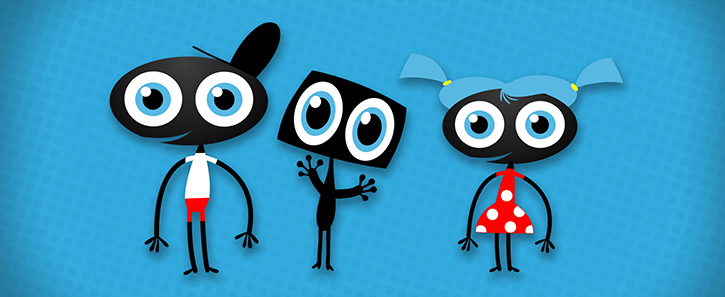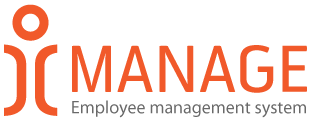iManage hub
Easy to understand articles about perfomance & employee management system
How to manage employees' competences?
To get you close to why everyone is talking about competences, and how you can use them, let me tell you a story about Pony, Chicken and flying Squirrel.

By Ivan Marković | Organisational development, Competences, Fun, HR, Performance management |
In a nutshell, competence is the ability to do something successfully and efficiently. In some cases, competence can also be considered as authority to assume responsibility. And that's pretty much it.
While working with a large number of companies, I’ve met with a very different views of this concept. As many people define it differently, it is very important to keep in mind that when you talk to someone about competences, make sure you know what do they really mean. And to get you close to why everyone is talking about competences, and how you can use them, I would ask you to be a "tabula rasa" and to leave aside all that you already think you know about them.
In our story we have Pony, Chicken and flying Squirrel. Let’s suppose three of our characters in the story work together in one retail store. Let's say that Pony had previously worked in the movie theatre, Chicken worked in the administration department, and flying Squirrel has not worked anywhere for a long time, even though he has finished a masters in ecology. They were all hired when a new pillow shop opened, without previously having any experience in a retail business. Sales was good at the beginning, people visited often and used the many discounts that company offered. Nevertheless, a year later the flying Squirrel had found a job for which he was actually qualified and went there to work on an environmental project. As sales had already begun to decrease, the company did not consider it necessary to hire someone new on his position. But the sales was getting worse and worse, while the documentation on the other hand was quite flawless.
The owners of the store and the retail manager, Cactus, blamed employees for this situation, especially the Pony, for whom they thought was not putting enough effort. They were disappointed because the flying Squirrel quitted and now tried to re-hire someone with master degree, because they thought the sales would increase. However, things got worse. In an effort to save the situation, Cactus decided to make a new move and made additional discounts on the goods in that particular store. Customers were coming back, but they were not buying more than one item. And because of small sales margin, the additional discount only made a bigger loss. It was clear to Cactus that Chicken and Pony needed to put more effort and offer an additional products to the buyers. And at that very moment, he had a great opportunity to send them to a cross-selling seminar held by famous Fox from London, an experienced lecturer and a sales consultant. The fact that participation fee cost as much as their monthly salary and the excellent grades and comments which this seminar received on the internet was a sure signs to him that results would be very good.
Pony and Chicken returned from training very happy and motivated. They met many new people with the same problems. They listened to an inspirational lecturer and were impressed with the fact that all 200 participants were thrilled at the end. They were passionate about the experience and the inspired by case studies, but sales results were still practically the same.
So the basic question is, where the Cactus went wrong?
Was the marketing strategy wrong, was the quality of the product, was it the location, the Fox, the Pony, the Chicken or the quitting of the flying Squirrel?
To complicate the situation a little further, Cactus went to a seminar where they explained to him the fantastic, contemporary employee motivation tools and performance based bonuses and salaries. Cactus returned very trilled from the seminar. He told his employees that he would work from that moment by new model, and that company would pay them based on the quality of work or performance.
By the end of the month, the results were even worse. Chicken has become rather depressed, the Pony began to complain to the customers that his salary this month will be very low, and the new Raccoon, with a master degree, spent most of the time on the cell phone looking for a new job. Cactus was now completely desperate and could not possibly understand what his mistake was and how this fantastic bonus model, which fantastically work everywhere, has not yielded good results. In short, Cactus simply did not understand the concept of competences. In general, employees are usually failing because they do not know how to complete particular tasks. In this case, they worked very well, while customers were coming in the store on their own, motivated by promotions and lower prices. What's the problem is that the only thing that they actually did was to assist customers while the goods were sold by itself. However, when it was necessary to sell the goods and respond to customer needs, they simply just did not know how to do it.
That is what the competences are all about.
That is why competence development with management system is a key part of successful business operations. Organizations that systematically address these processes can count on their employees doing the job within expectations, and not to hope that everything will be "alright" because employees "know how to do it" or, as Cactus, believed in fast and easy solutions that "work everywhere".
1. Be aware that the competence system is complex and never can be implemented by one person alone
2. Competences are something that people usually do not know how to do it by themselfs
3. Accept that it is a process that will last for a while
4. Expect the employees you lead know much less than you expect
5. Make sure that job descriptions are describing what the employees are really doing
6. Hire someone external to define key competencies for each positon
7. Evaluate your employees' current competencies (it is the best way to do it through performance measurement system, or testing if you do not already have that kind of system in place)
8. Hire someone to assess which employee development model would be the best fit
9. Continue to work with employees to achieve and maintain the level of competence required for completing their activities
Honestly, the points 8 and 9 are the most difficult part of the implementation process, but from the experience, it is clear that the reasons for poor employee skills actually lie in the first several points.
We believe that your company deals with more responsible things than pillow sales, so the problems that arise from inadequate employee competence are often higher. Although, generally it is not easy to see it in more complex jobs, the more important problem is that managers misdiagnosed insufficient competences with something else, and the usual suspects are insufficient investment, motivation, effort or lack of employee interest.
And there is no such a motivator as doing something you like and you are good at, in the environment that suits you. Right?
But that is not the whole story, right? Let’s see it from another angle. Let us see „Where Cactus went wrong?“ or simply put Where managers make mistakes.
Leave a comment - Be a part of community :)
Just iManage it
iManage is proven Employee Management System. It’s a reliable support service that has been evolving for 15 years. So all of us understand our mission clearly, to help management to reach their goals.
And we just get it done!
About iManage Hub
Interesting articles and analyses written by community of professionals about management, performance, educations and HR in general. In-depth explanations, points of view and real life stories, that will be useful and easy to understand by anyone, from owners and senior management to someone who is at start of serious professional career.
About iManage support
iManage is employee management and support suite that will provide organisation with systems, precise information and guidelines necessary for optimal employee management and results. Find out more




